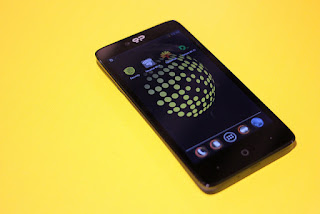 |
Image courtesy of jeff_golden at Flickr.com
|
Encryption is defined as the conversion of electronic data, Plaintext, into ciphertext, encrypted text. This type of text can be hard to understand by a person that is not authorized to do so. Encryption main purpose is to help in the protection of your confidential electronic data which can be found in your laptop, personal computer, or the digital information sent through Internet and other networks. Even though the use of encryption is not new for humans, the advancements about it are greater every day. These advancements are generated by the increment of security problems on the transferring of digital data. That’s why companies related to these issues have worked for many years to develop strategies against safety gaps. In this list, you will find encryption tools that were created to help you in the difficult task of protecting your valuable digital data from the online threats out there.
BitLocker
This full disk encryption software has been developed by Microsoft and it has been set up in almost every Windows operating system. BitLocker works with AES (Advanced Encryption Standard) which is a military grade encryption that most of the security companies use. The easiness of this encryption tool is that you can use it effortlessly, and you can already find it in your Windows operating system. When you encrypt your hard disk with BitLocker, it will block any data breaches or exfiltration from it. If someone steals your laptop, it would be impossible for them to access your files.
7Zip
If you dislike the idea of encrypting the whole hard disk, 7Zip is the right tool for you. 7Zip is a simple but powerful encryption tool (AES - 256) that can support you with ciphering only the data you need to. It works with a 7z archive format, but other archive formats can be also read and written. This encryption tool has a great compression format, and it can extract nearly all file formats. 7Zip is suitable for almost all Windows versions, and you can find it in about 87 languages.
AxCrypt
This encryption software has been around for 15 years, making one of the most popular tools to encrypt data around the world. You can use this software to protect important data from your computer system. AxCrypt encrypts a file during a definite extent of time, and it will be decrypted automatically after it arrives safely to its destination. This tool is simple and fast which makes easier to encipher a complete folder or a group of files. In addition, AxCrypt provides safety against cyber criminal attacks and their extensive cracking methods. It can be installed on different Windows operating systems.
 |
Image courtesy of Linux Screenshots at Flickr.com
|
VeraCrypt
Tools from VeraCrypt strengthen the security of the system algorithms and its encrypted partitions so it becomes immune to advanced cyber attacks. You can download it freely for Windows, Linux and MacOSX operating systems. If you have files with the obsolete TrueCrypt too, the version 1.0f of VeraCrypt can import TrueCrypt files and it can convert containers and system partitions from a TrueCrypt format to a VeraCrypt one. This encryption tool is been continually improved and its updates increases its security.
Tor Browser
Virtual Private Network – VPN
Read more about encrypt and secure communications in this older post “How to encrypt communications”
















